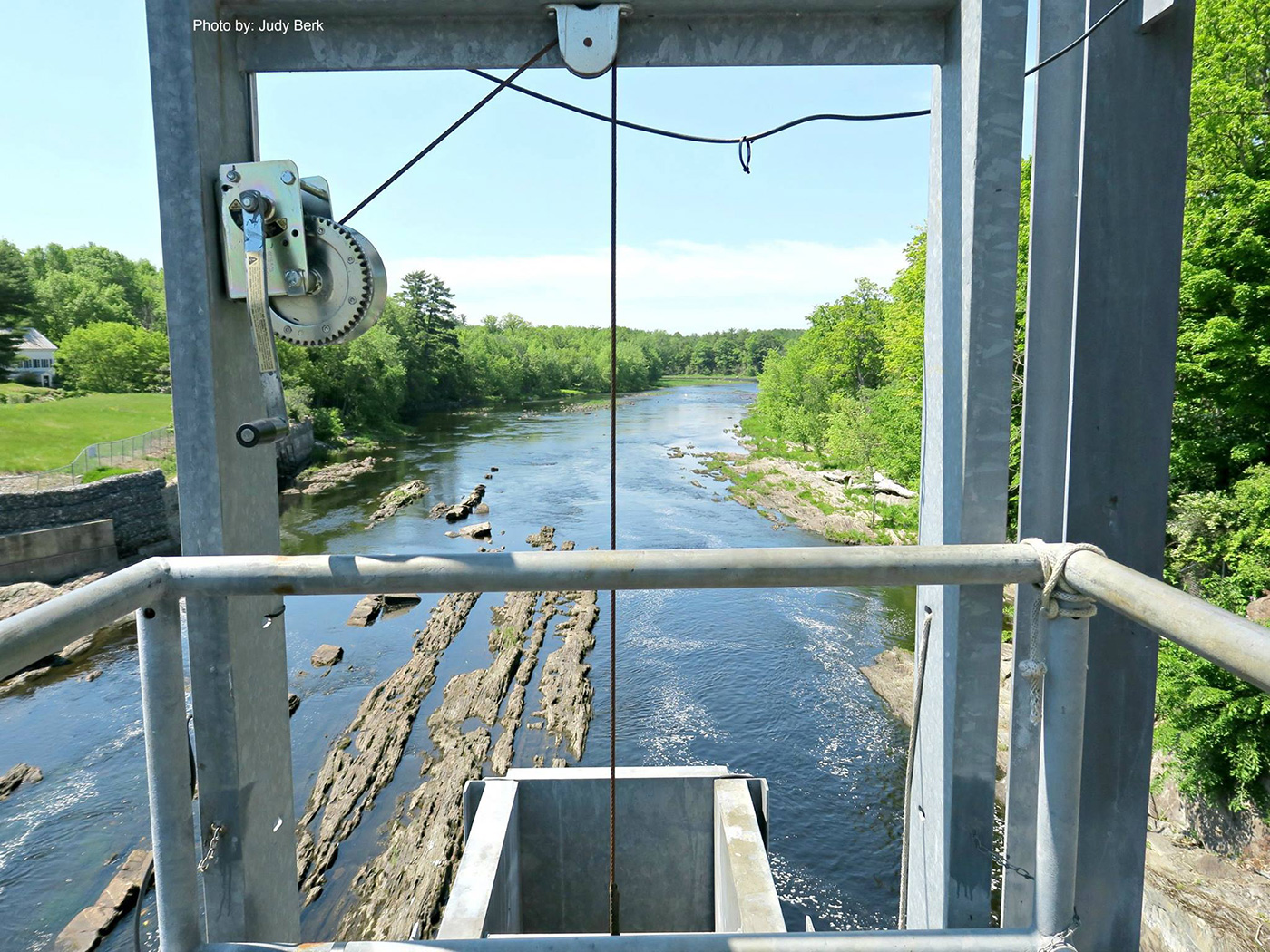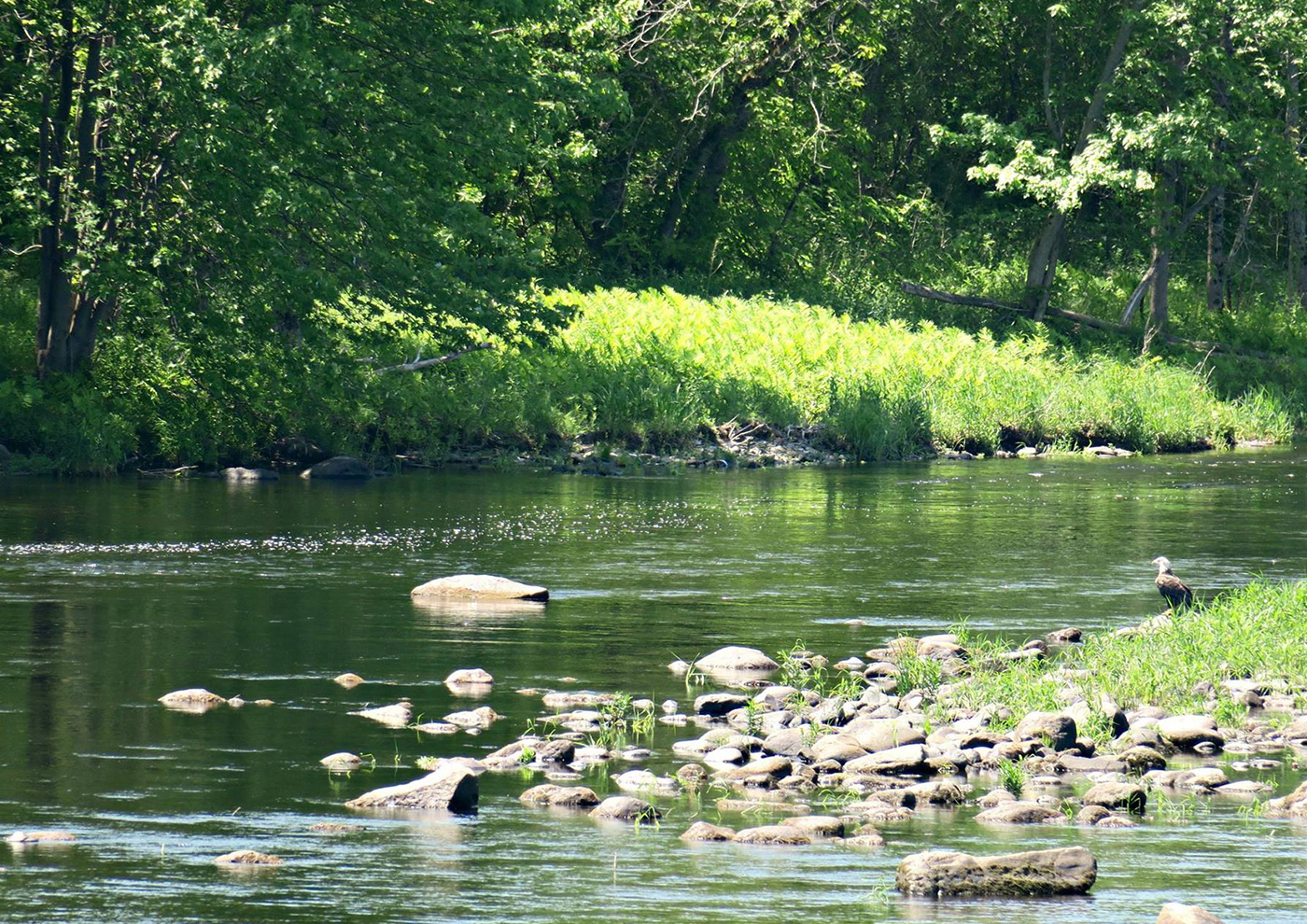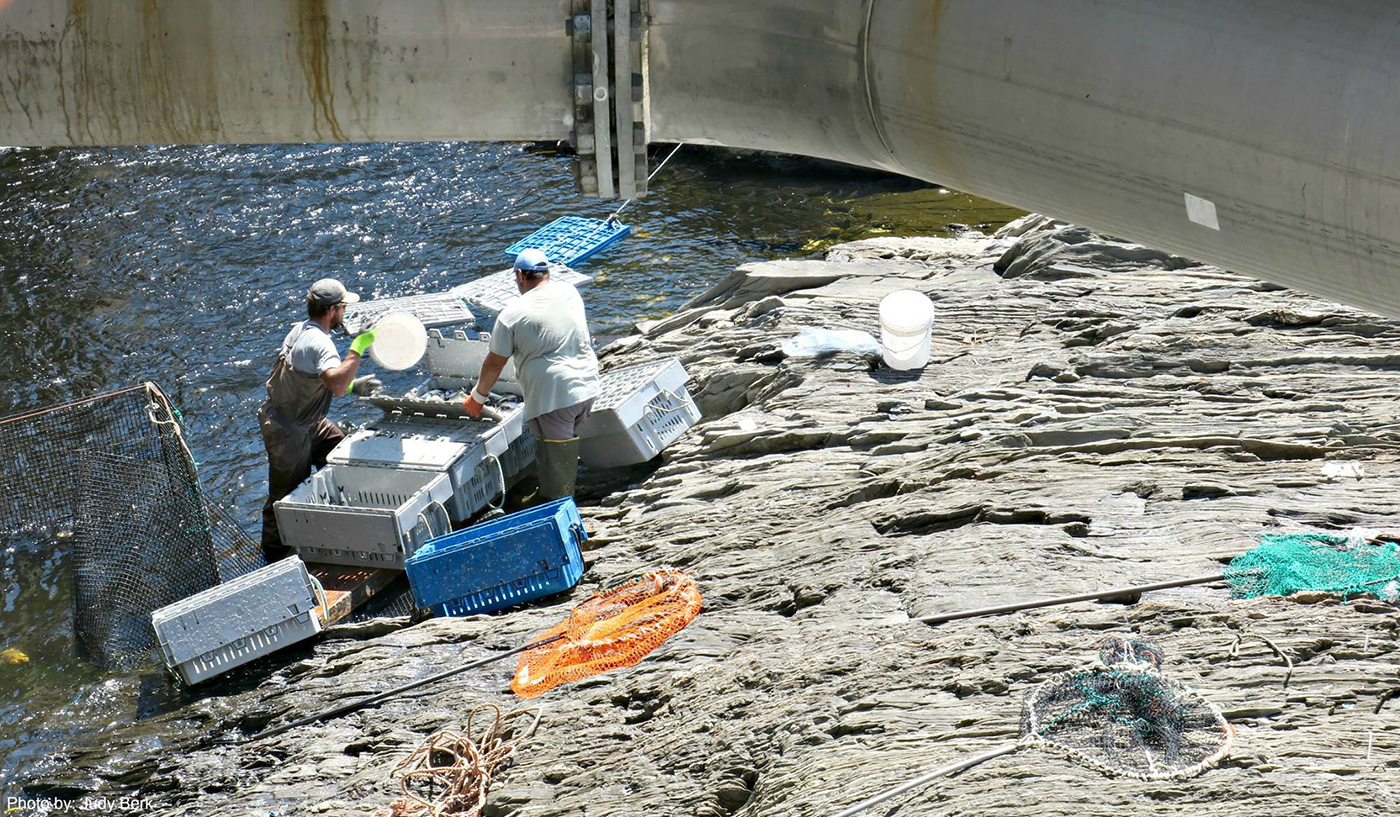Some animal migrations are large and obvious. I’ve seen many films of giant wildebeest herds moving across the plains in Africa numbering in the hundreds of thousands. I’ve been to South Dakota to hunt the spring migration of snow geese on their way to arctic breeding areas. I stayed in the small city of Aberdeen, and would see snow geese flying over the city all day and hear them calling all night long. These big migrations are hard to miss.
Other animal migrations are as large, or even larger, in terms of numbers but much less obvious. They happen right under our noses, and most people never even know. Maine’s runs of migratory fish are good examples. Right now, millions of alewives in Maine are returning to the Kennebec River (and other streams and rivers in Maine) after spending several years living in the ocean. More than five million of these fish have already passed upstream of the Benton Falls Dam on the Sebasticook River heading for their spawning grounds in upstream ponds. Five million!
NRCM staff members recently took a trip to the Benton Falls Dam to see alewives passing over the dam using its fish elevator. As soon as we arrived at the small dam, many miles from the coast, we could smell the ocean. The alewives in Maine rivers bring the ocean along with them as they swim upstream, providing marine-derived nutrients and calories for the countless species of fish and wildlife (and even a few people) that eat them.

Fish elevator at Benton Falls. Photo by Judy Berk/NRCM
The fish look like green ghosts from above and are a little hard to see through just a few inches of water. When they are splashing in a fish lift, though, they are silver packets of energy. They can’t wait to wriggle into the flume that runs over the dam, through the fish counting tubes and the observation room, and back into the river. Alewives are more successful at using engineered fish passage facilities than most other species of sea-run fish. The people at the Benton Falls Dam also work hard to run their fish lift well.
5,000,000 fish!!! That’s a big migration, the largest alewife run in the United States. It’s more than three times as many individuals as there are migratory wildebeest in Africa. Yes, I know alewives are much smaller than a wildebeest, but that’s still a lot of fish! And most people in Maine have probably never seen an alewife. If you don’t look for them, you won’t even know they are moving through your town. And five million is a tiny fraction of what we used to have in Maine. Even with the successes on the Kennebec and the Penobscot as a result of dam removals and improved fish passage, sea-run fish populations are only about five percent of their historic numbers. The Benton Falls Dam is a great place to get a sense of wonder at the power of alewives and the life force they carry.
I am lucky to have a seen another example of this power even fewer people get to see. A few years ago, on a beautiful September evening, I was out on the Kennebec River in a boat I co-owned with a friend. He had his young daughter with him, and both of them were sitting in the bow. I was driving the boat in the stern. Opening day of duck hunting season was just around the corner, and the ostensible purpose of our trip was to scout for ducks. Really, we were just out for the ride and the beauty of the evening.
That boat was fast (I own a slower, more sensible boat now), and we were moving along at a good clip when I cut the power quickly. I jostled my two passengers who wanted to know what I was thinking. I wasn’t sure myself, but something had caught my eye. I looked around and noticed that the Kennebec was shimmering silver as far I could see in every direction. The setting sun made the sparkling even more intense, but I had to look closely below the boat to learn the real cause: billions of minnow-sized juvenile alewives. This is not an exaggeration. Female alewives can produce 100,000 eggs each!

Bald Eagle waiting for fish near Benton Falls. Photo by Judy Berk/NRCM
Despite the success of the past two decades, restoring alewives and other sea-run fish remains a huge challenge. Maine has thousands of dams, and the vast majority of them lack fish passage. The rewards of sea-run fisheries restoration are big, however, and we need to rise to this challenge. Rivers and lakes that have their native alewife runs feel more alive. Watching stripers or seals feeding on alewives many miles from the coast is thrilling! Loons swimming after alewives as they enter into a lake are a spectacular sight. And we will never have a prosperous coastal groundfishing industry again without restoring native sea-run fish.

Harvesting alewives at Benton Falls. Photo by Judy Berk/NRCM
Maine is wonderful place to live, but it would be even better with more native sea-run fish and all the wildlife that comes with them. Reconnecting our lakes and rivers to the oceans should be a priority for all of us.
—Nick Bennett, NRCM Staff Scientist and Healthy Waters Project Director











Hi Nick, I’m a science teacher from NY and I love the Alewives migration. What a powerful relevant example of life. I was wondering if there was public access to and around the fish ladders and conservation stations you have in area. I would love to take a ride up and see it all first hand.
We encourage you to check out the Damariscotta Mills Fish Ladder (https://damariscottamills.org/) when the alewives are running in May. Or the Benton Falls ladder during the Benton Falls Alewife Festival (https://www.facebook.com/p/Benton-Alewife-Festival-100064405762862/) also held in May. We hope you can make the trip next year to see the alewives!